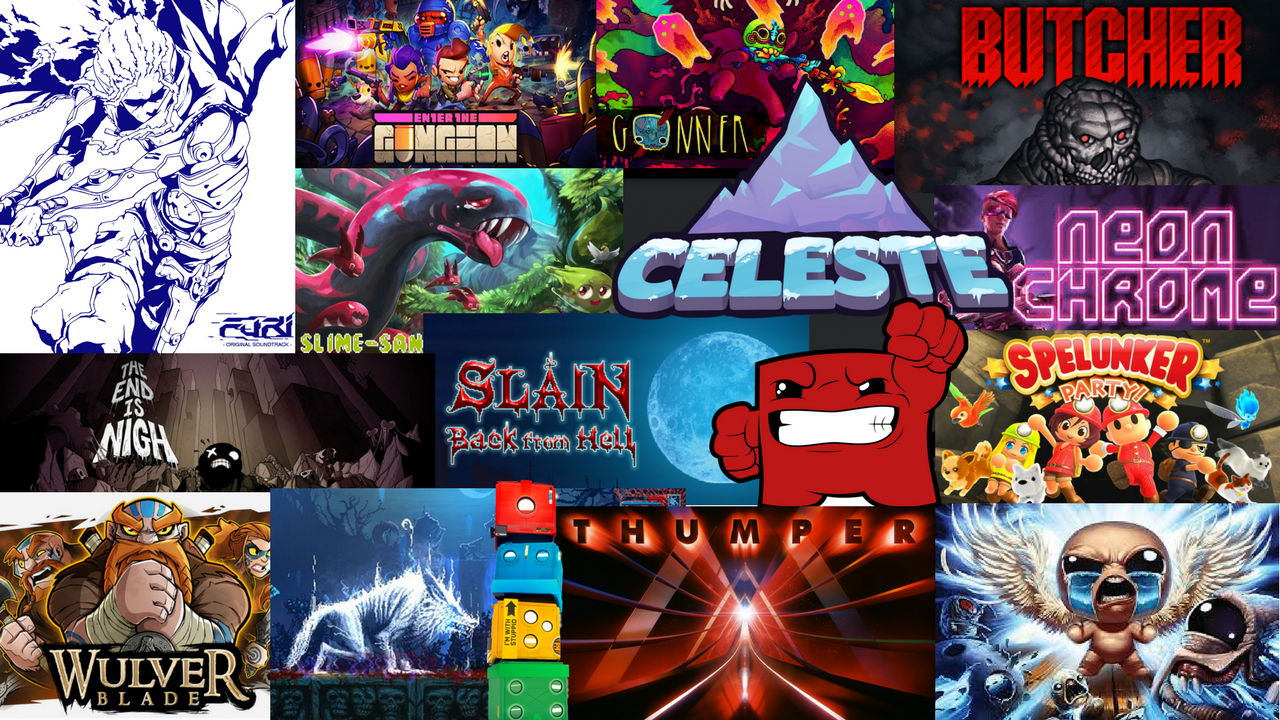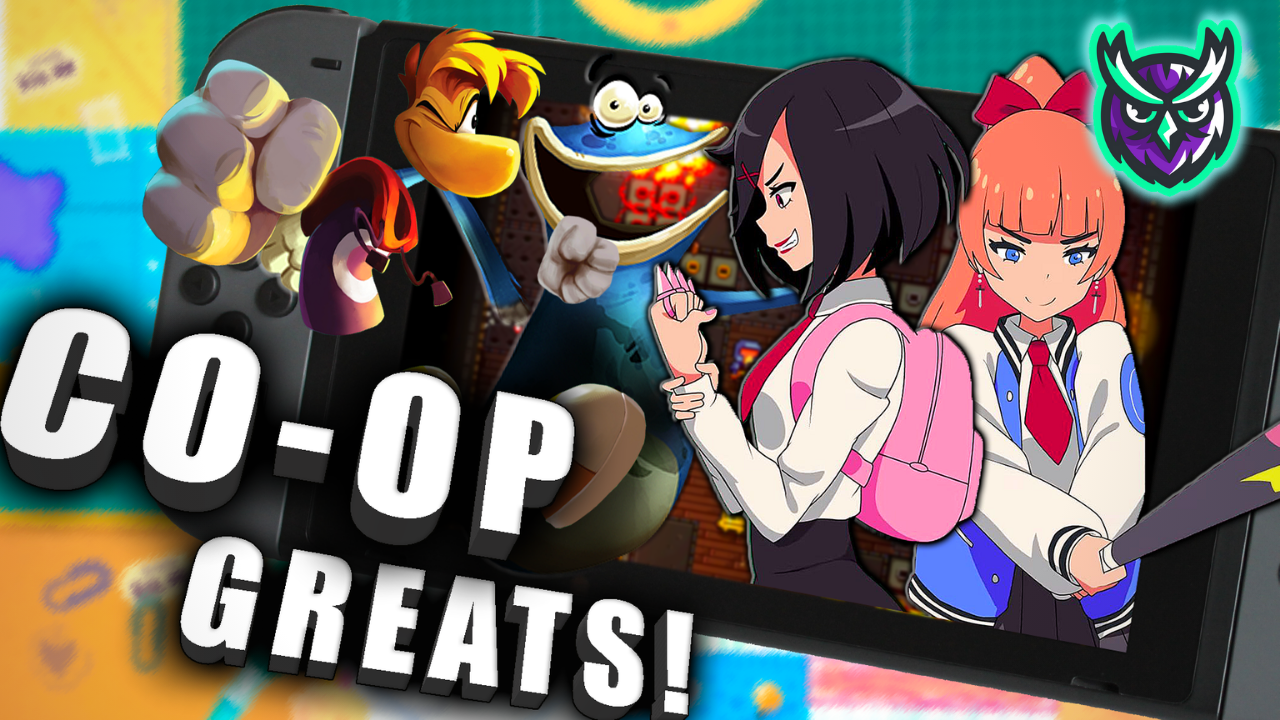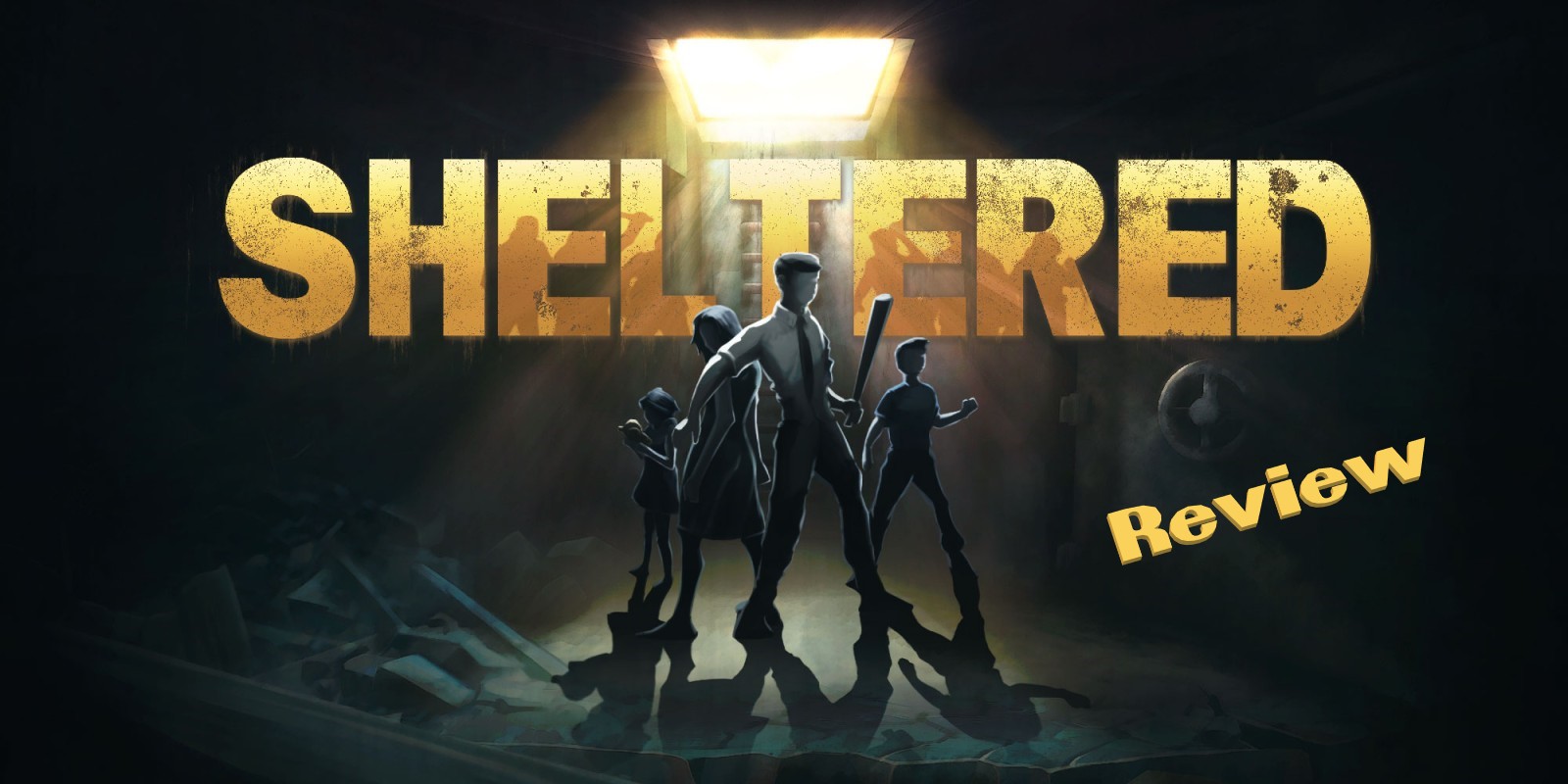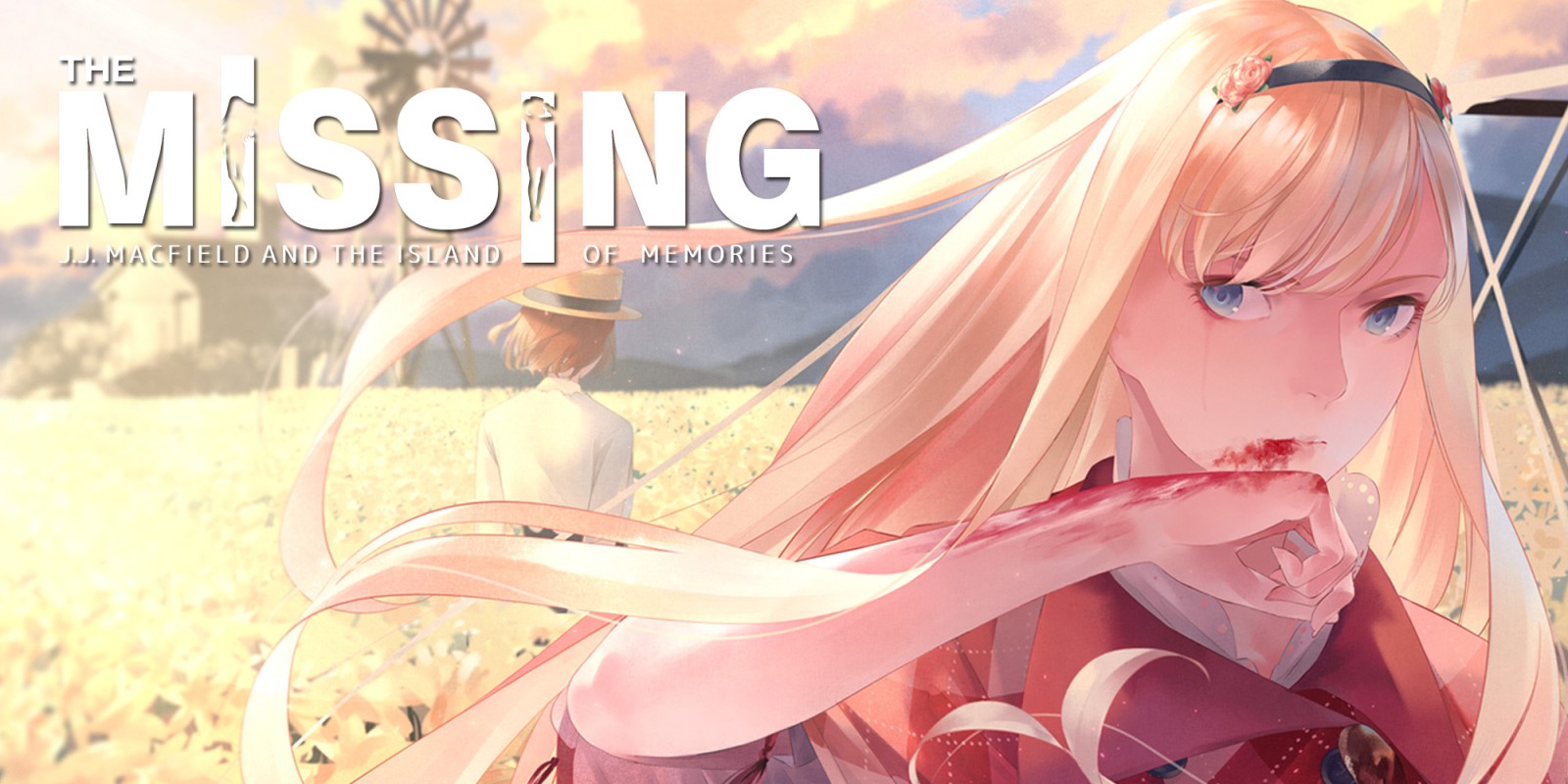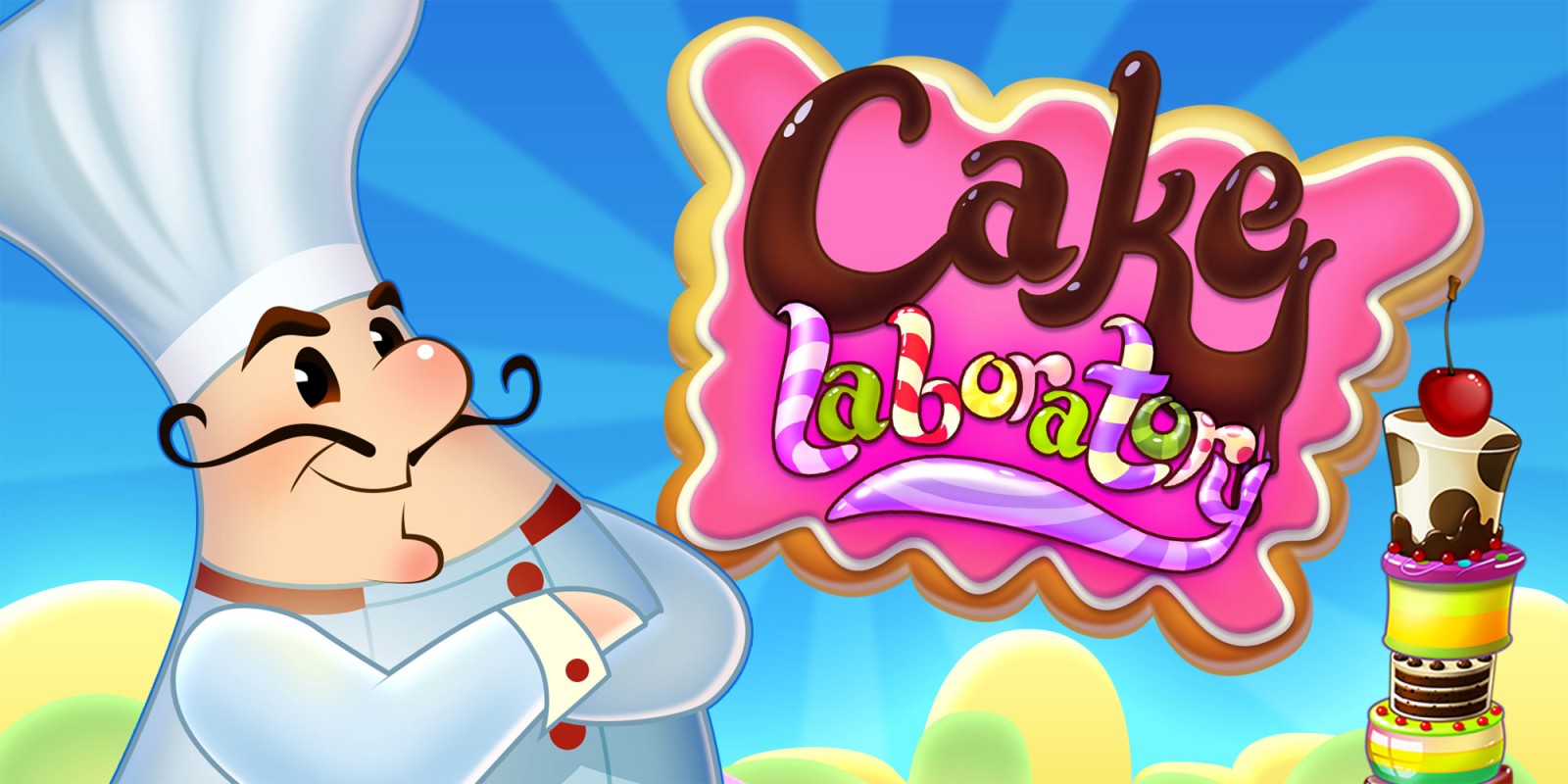Sheltered Switch Review by SwitchWatch
Developer: Unicube, Team 17 Digital Ltd.
Publisher: Team 17 Digital Ltd.
[/et_pb_text][/et_pb_column][et_pb_column type=”1_2″][et_pb_text _builder_version=”3.19″]Release Date: Out Now
Price as of Article: $14.99 USD, £9.99 GBP
Game code provided by Team 17 Digital Ltd for review
“After a global apocalypse, you take on the role of protecting four family members living in a deserted underground shelter. Their well-being and survival are your responsibility. One bad decision and a loved one is gone, forever.”
[/et_pb_toggle][et_pb_toggle title=”Gameplay” open=”on” _builder_version=”3.19″ use_border_color=”on”]
Upon loading up Sheltered, I did not really know what I was in for. I knew it was a survival-sim game, in a shelter, and had a pixel art style. My first thought was, “This is going to be a ‘This War of Mine’ clone and it is going to be bad,” but I tried to keep an open mind.
So when the game loaded, I could pick from Survival and Scenario modes. I started in survival mode, thinking I would get a random family and that would be it. Well, not at all. In fact, you get to decide how the family looks, the base statistics of the family, a good trait – more on this later – and if they have a pet. Then, I got to pick the difficulty – I am not going to lie, on my first play through, I put the setting on easy to better understand the game. I didn’t want to go in with no idea what I was doing and die over and over.
The Family Stats
Being a sim game, stats are incredibly important. Within Sheltered, there are two main lists of stats to consider, these being the ones you picked at the start and also the person’s health chart. When you make a family, you pick from a list of predetermined stats, as well as a trait that will affect how they play.
The attributes are Strength, Dexterity, Intelligence, Perception, and Charisma. These attributes will affect what the person is good at and bad at. Along with the attributes, there are Traits; you pick a positive trait and are randomly allocated a negative trait. These, simply put, are your family’s personalities.

The main focus of Sheltered is to manage the family’s health stats. These are shown on-screen as bars on a chart. They include Health, Thirst, Hunger, Tiredness, Dirtiness, Toilet, Stress, and Trauma. These are all managed by what’s been crafted as well as some items that you find. You can manage these manually or, by clicking in the left stick, the family can manage themselves. I preferred having them do it. If any of these stat bars go red, this is a warning that you need to do something, if not, the family member will eventually die. That then leads to all sorts of problems.
The Problem With a Family Member Dying
This is a massive problem as you would expect in a game about surviving. First, you are a person down on jobs and duties, but moreover, the remaining family are going to have mental health problems with Stress and Trauma. These are not fun to deal with at all. The ones left alive have their Trauma levels go to maximum. You will need to comfort them with toys, books, and a pet, and hope that they can recover. If they cannot recover, they become catatonic and unusable. To keep them alive, you will need another character to assist with eating and drinking. Stress can lead to Trauma and catatonia but can be rectified by correcting the health stats, thankfully.
Resources, Trade And Expeditions
Resources are vital in surviving the apocalypse, but they are also sparse. There are a few ways to acquire resources. Water is gathered by a filter outside and is collected in containers in the shelter; more containers means more water in the Shelter. The filter will need repairs and upgrades to last longer and work better. Oxygen is another major resource to have. This is also filtered from the top side and, again, the filter can be upgraded.

Food, bottled water, and building materials are gathered through expeditions and trade. Expeditions are set up by going to the radio next to the entrance. You can select who you want to send on the expedition and, if you have a dog, it can come with you. After choosing one or two people, you can select equipment to send with them. These include weapons and armour, as well as water and medical items. You can also equip them with a plastic bag to increase the carrying amount. Each person can carry eight items, so having two go doubles the carry space – and when you augment with the plastic bag, you get an additional three items per bag. These spaces are overly important!
After that, it’s time to select a destination. The destination’s distance will come with a cost. The further away the expedition, the more water it will cost, so keep that in mind. There is also a camper van that you may be able to fix up and use. While out on the expedition, the party will radio back and then a decision will have to be made: these can be to approach other survivors or to go check for items. Once made, you will need to wait and see what happens. If you happen to approach people, the game will move to the party and you could get a few options: fight, trade, or talk. If you get into a fight by picking it or the others are hostile, the game switches to a simple turn-based RPG. On a person’s turn, you can pick attack, block, stun, and flee. This, for me, was the best part of the game, even if it didn’t happen that often… it’s a good thing.

If you win, you can grab the spoils of war as well as experience points to level up stats. After the party returns, any and all items they have are put into the overall stores of the shelter. The characters in the party may need to have their health stats attended to.
Traders will visit your shelter and offer you rarely found goods, as well as some essentials, if you are lucky. Trade is done through a bartering system; you pay for goods with goods, as money is no longer an important resource. This seems to happen roughly every ten days so it’s a good idea to save up. Also, the currently selected character is the one that does the bartering, which is affected by one’s charisma stat.

The Shelter And Cleaning
The shelter is your home, sanctuary and, more than likely, your tomb. Like most survival games, it’s pretty basic and needs a lot of improvements, from beds to new rooms, a toilet and a mop.
Firstly, keeping the generator going is a must, be that fuelling or repairing. Without power, the family won’t last long. Everything that is built needs resources that must be found – though there are basic resources in the shelter to start off with – and time for how long it will take to complete the build or upgrade. Every action you take can and will affect the character performing it, making them tired, dirtier, hungrier and thirstier.
People need to potty, it’s a fact, and these characters are no different. After a while, they will need to use a toilet. You start off with a bucket that needs to be emptied every time it is used or it will make survivors sick, so it has to be cleaned – the mop is great for this. In fact, cleaning is not only good for the health, both physically and mentally, but it keeps rats away. Rats spread diseases and will eat food, so tidy up after yourself.

Helping others?
From time to time, within your duration at the shelter, there are life-changing decisions to make. One such decision is whether to help people or not that get into the shelter. It is a good idea to get extra help, as the jobs are never-ending. This decision could have major knock-on effects down the line as there is an extra mouth to feed and hydrate. Then, there is the issue of whether you can even trust the person? They may seem normal, but for all you know, they could be a psychopath.
It is very much a risk and reward system, like almost everything in Sheltered, but I felt this was especially so. I don’t trust most people who want to get into my shelter, but I knew I needed help, so I let some in. I was not too happy about it, but I did it. One came in and stole stuff, then left. It makes the game tenser. When someone has got enough trust in the game, they can be sent out on expeditions too, giving more options on who should stay and work, and who to go out and find items.
Scenario mode
This was, for me, the best experience with Sheltered. Here, you are given a set scenario and you have to try and survive for as long as possible. My personal favourite was ‘Surrounded’. It starts with a family in a shelter, and another family that wants to be in the shelter and are willing to kill for it. After that, the dad leaves for ten days to collect items for the shelter. Within those ten days, you will be attacked at least twice. After each attack, the doors will need repairing. Traps can be set and items can be upgraded, just like in the Survival mode. Quick tip: play Survival mode first, it even tells you in the game to do so.

After ten days, if you have survived, the dad will return and will tell you about his travels. Here, the game shifts to the map and you have a selection of five places to pick, but the dad can only visit four of them. It is up to you to pick where he went and what he picked up, making it a tactical choice: do I take the water that I have over three hundred of in store or do I take the metal hinges and upgrade the shelter doors?
[/et_pb_toggle][et_pb_code _builder_version=”3.17.6″] style=”display:block; text-align:center;” data-ad-layout=”in-article” data-ad-format=”fluid” data-ad-client=”ca-pub-5661714653949151″ data-ad-slot=”5669732186″>[/et_pb_code][et_pb_toggle title=”Audio” open=”on” _builder_version=”3.19″ use_border_color=”on”]The Audio in Sheltered is nothing special and none of the tracks are memorable. That is not to say the sound effects are bad, it’s more like, they do the job, and that is all. It seems like this had the least amount of effort put into the game.
This being a pixel art style, the graphics were not going to be amazing, but it does add to the charm of the game, allowing gameplay to be the main focus here. The pixel art style is good, not too simple but not too complicated to know what’s going on and that a person is wearing a Kevlar vest, for instance.
The performance was good in both docked and hand-held modes. I preferred it in hand-held. There were no problems with performance at all.

As of writing this review, the sale price of $11.99 USD or £7.99 GBP is a bargain. Even at $14.99 USD and £9.99 GBP, it is still a good price. The replayability alone is worth the price, and if you like survival-sims, it makes for a good, cheaper alternative to some of the pricier titles out there. This version also includes the expansion Surrounded and Stasis additional content.
Pros
[/et_pb_text][et_pb_blurb use_icon=”on” font_icon=”%%47%%” icon_color=”#ffffff” use_circle=”on” circle_color=”#5bd999″ icon_placement=”left” _builder_version=”3.19″]Cheap
[/et_pb_blurb][et_pb_blurb use_icon=”on” font_icon=”%%47%%” icon_color=”#ffffff” use_circle=”on” circle_color=”#5bd999″ icon_placement=”left” _builder_version=”3.19″]Loads of replayability
Addictive gameplay loop
[/et_pb_blurb][et_pb_blurb use_icon=”on” font_icon=”%%47%%” icon_color=”#ffffff” use_circle=”on” circle_color=”#5bd999″ icon_placement=”left” _builder_version=”3.19″]RPG elements
Includes the expansion packs
[/et_pb_blurb][/et_pb_column][et_pb_column type=”1_2″][et_pb_text _builder_version=”3.0.95″]Cons
[/et_pb_text][et_pb_blurb use_icon=”on” font_icon=”%%47%%” icon_color=”#ffffff” use_circle=”on” circle_color=”#e6567a” icon_placement=”left” _builder_version=”3.19″]Stat heavy
Can be boring at times
[/et_pb_blurb][et_pb_blurb use_icon=”on” font_icon=”%%47%%” icon_color=”#ffffff” use_circle=”on” circle_color=”#e6567a” icon_placement=”left” _builder_version=”3.19″]Can be very hard
Randomness is unforgiving
[/et_pb_blurb][/et_pb_column][/et_pb_row][/et_pb_section]

